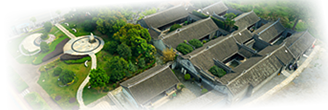
Collection name: Tan Zuyun, Tan Shaoyun, Tan Xiaoyun, Han Peifen's Four Style Calligraphy Four Screen
Historical Era: Republic of China
Size: 134cm vertically and 33.5cm horizontally
One:
Commentary: The pine, snow, bamboo, and stone in this frame are tall, ancient, and simple. Zhao's paintings have a strong sense of vitality, and there is no falling sound, but only its seal is used
Style: Mr. Guixin, Zhengzhi Hailing, Tan Zuyun
Seal: Tan Dezhong Seal (White Script), Cloud Painting and Calligraphy (Zhu Script)
Secondly:
Commentary: Mi Yuanzhang's painting source book is Dong Beiyuan, and it is specially inspired by his own ideas. Therefore, its realm is unparalleled compared to humans. Gai Qitian has a high and majestic appearance, and there are few ink marks of ancient people that can be seen.
Style: Mr. Guixin, the founder of the Legalist School and a native of Fenghuangshan
Seal: Zhiren Calligraphy and Painting Seal (White Script) Tan Shaoyun (Zhu Script)
Three:
Commentary: Bao Shenweng used the "Prajnaparamita Stele" as a personal book of the Western Jin Dynasty, but this has not been thoroughly examined. According to this sutra, it is now in good condition and is located at Yingfo Rock in Xieshan. The sutra was created by Prince Chun of Liang's father during the first year of Wuping.
Style: Mr. Guixin, Fajia Zhengzhi, Tan Xiaoyun
Seal: Written by Tan Zhilian (in Zhu script) and Xiaoyun (in Zhu script)
Four:
Commentary: It says: I have already paid for the dampness of the San family. Tian Wall Tian, Yu You Shuang (changed), punished a thousand with a thousand strokes, and the father of Xiang Rong in the Palace of Lu swore that he was the king of Tu at the Eastern Court of Douxin Palace
Style: Mr. Guixin, Fang Jiazheng, Hai'an, Ms. Han Peifen, seal script
Seal: Ms. Peifen (Zhu Wen)
Tan Zuyun (1876-1949) was known as Dezhong, Xiaoxian, Gaotan, and later Hailing Laoren. The young man learned literature from Chen Xibi and Lu Zicai, and the weak crown became a young master. In his spare time, he would visit the ruins of King Zhong and Han Tang inscriptions. His calligraphy was ancient, simple, and natural. In his later years, he lived in Shanghai. Tan Zuyun is not only skilled in calligraphy, but also skilled in painting, with a focus on freehand brushwork. He is a rising star of the maritime painting school.
Tan Shaoyun (1901-1988), also known as Zhiren and Fenghuang Shanren, was a Miao Wei layman and the son of Tan Zuyun. When I was young, I went to Shanghai with my father and received guidance from many famous masters on the sea. I then became a disciple of Wu Changshuo and devoted myself to studying calligraphy and painting. Zeng Xi once commented on his paintings: "The strokes are vigorous and profound, just like what Fu Sou did when he was seventy years old
Tan Xiaoyun (1904-1980), also known as Zhilian and Miaolian Jushi, was the son of Tan Zuyun. When I was young, I went to Shanghai with my father and learned painting from Shen Yizhai, Lu Yifei, and others. I majored in figures, flowers, and birds, and also carefully studied the painting techniques of Bian Shoumin. The painted works often draw inspiration from ancient poetry and self written poetry, with a clear and elegant charm, pure and refined.
Han Peifen (1901-1965), niece of Han Guojun, wife of Tan Shaoyun, ranked Baoying, stage name Peifen, converted to Master Yin Guang and adopted the Dharma name Zhida. I have a rich collection at home and have been influenced by calligraphy since childhood. You work with flowers, birds, grass, and insects. His painting strokes are exquisite and graceful.
Tan Zuoyun had never studied painting before, but in his middle age, he had a deep understanding of calligraphy and painting and traveled extensively along the Yangtze River.
In 1930, Tan Zuoyun lived in Jiming Temple in Jinling and often talked about calligraphy and exchanged experiences with Tan Yankai. Afterwards, he went to Shanghai with his son and made a living by painting. Exchange and learn with Ren Bonian, Wu Changshuo, Hu Gongshou, Huang Shanshou, Pu Hua, etc., and make friends with Mexico. Tan Zuyun, Tan Shaoyun, and Tan Xiaoyun gained fame in Shanghai and are known as the "Three Tans of the Sea".
This work was jointly created by four members of the Tan family and presented to Mr. Guixin. Four people selected a small section of ancient books such as painting and book theory. Tan Zuoyun's book was "The Story of Gengzi Selling Summer, Volume 2: Zhao Songxue's Bamboo and Stone Painting of Withered Trees", Tan Shaoyun's book was "The Story of Gengzi Selling Summer, Volume 3: Mi Yuanzhang's Landscape Painting", Tan Xiaoyun's book was "The Double Boats of Guangyi, Part 19 of the Miscellaneous Essays", and Han Peifen's book was "San Shi Pan". There are four types of content and four types of writing styles, including authentic cursive script, seal script, and seal script, which provides a glimpse into the appearance of each writing style. Kaishu has the meaning of clerical script, with a simple and rustic brushwork that deviates from the square shape of Kaishu. It is lower on the left and higher on the right, with a rustic charm of gold and stone. The strokes of running script are agile and coherent, and the ink color is varied and layered throughout the whole. Lishu mainly uses dry brushwork, with strokes that are full of twists and turns. The strokes are intricate and graceful, with a broad and broad structure that is both immature and not rigid. Seal script has a unique style of brushwork, sometimes flying white appears with a single stroke, and ink is added to it, similar to the technique of adding moss. It also appears in clerical script works. The handling of strokes in the entire work is rich and diverse, with a sense of simplicity and simplicity.
|






